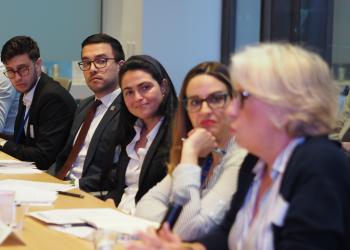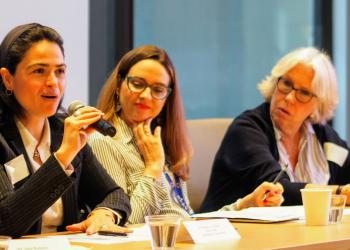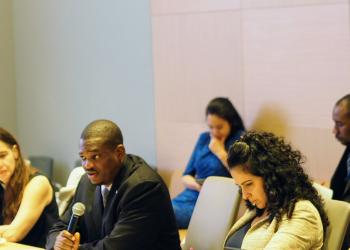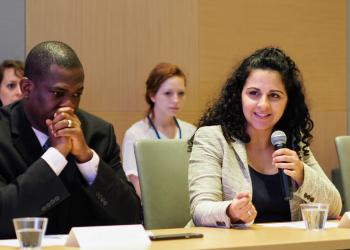How can the interconnectedness of humanity help us implement the SDGs?
The Baha’i International Community (BIC) and the International Peace Institute co-hosted a breakfast dialogue to discuss Sustainable Development Goal (SDG) 16—Peace, Justice and Strong Institutions—in the lead up to the High Level Political Forum (HLPF) at the United Nations held from 9-18 July 2019.
The breakfast dialogue formed part of a series hosted by the BIC for UN officials, Member States and civil society to discuss the Goals in an environment that is neutral and open, in anticipation of the HLPF, where progress on select Goals are being reviewed. The theme of this year’s Forum, taking place from 9-18 July, is “empowering people and ensuring inclusiveness and equality".
In her opening remarks, Representative of the Baha’i International Community to the United Nations, Melody Mirzaagha invited those gathered to reflect on relevant principles necessary for building peaceful societies.
“If notions of “us” and “them” and the weakening of multilateralism are not in line with the 2030 Agenda, then what ideas are? What are some relevant principles that can shape and formulate shared solutions?” Ms. Mirzaagha asked those gathered.
“For example, the idea that humanity is inherently interconnected, that injury to one is injury to all, and that no individual person or group of people is superior to others can help frame our approaches to the 2030 Agenda.
“From this lens, one way to see the Agenda is as an embodiment of a shared identity and common purpose with universal value across a rich diversity of nation-states, each of which is thinking about implementing the Goals in different ways. So how can this principle of oneness—of humanity being inherently interconnected—influence how we move forward with the SDGs?”
Ms. Mirzaagha added that the SDGs represented a growing consciousness among humanity of the need for international cooperation and movement towards a more durable peace.
Alan Ebun George, a Counsellor with the Permanent Mission of Sierra Leone to the United Nations, said it was important that various actors involved in the SDG 16 space present a united message during the HLPF in order to avoid approaching the issue in a fragmented manner.
“I would encourage all of us promoting Goal 16 to come together to send a message...that the prevention agenda works and that this is the evidence. We should all focus on sharing a singular message that we are all promoting SDG 16.”
Mr. George added that it is important to present data and evidence that shows that peaceful societies lead to the reduction of poverty and women’s empowerment, demonstrating that all the Goals are interconnected.
John Romano of the TAP Network, a coordinating body of a network of civil society organizations, said that it was important to emphasize the interlinkages between the SDGs and called on Member States to make additional commitments to SDG16.
“SDG 16 needs to be implemented in an integrated manner and express full linkages with the other SDGs. Monitoring needs to be people centred and there needs to be inclusive partnerships around SDG 16 at local, national and global levels,” said Mr. Romano.
A participant during the discussion added that when thinking about the SDGs, it is “important to keep a spiritual, universal framework in mind.” She noted that “Agenda 2030 embodies a shared identity and common purpose,” which, Ms. Leiva Roesch said, implies viewing the Agenda as a whole, and “refraining from moving into siloed conversations.”
--
Follow the Baha’i International Community on Twitter, Facebook and Instagram







